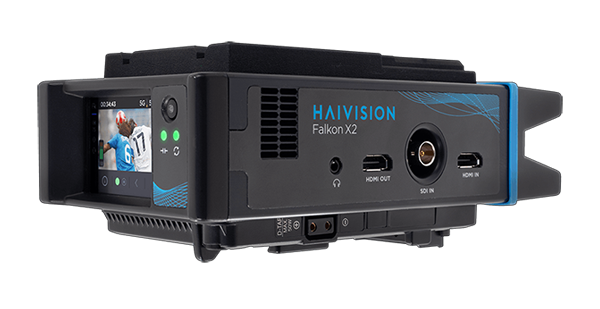With many industries shifting to remote production, virtual conferences, and online events, it’s important to ensure information being shared over the internet is sent securely and only to the end users that need to receive it. As technology has evolved over the years, so have the methods of stealing information, as cybersecurity continues to be a major concern. So how can you ensure that the video content you are sending is getting to its destination securely and only to those that need to see it?
AES encryption has become an important way that organizations and creators keep their content secure when transporting video. This post is a high-level look at what AES encryption is, what the benefits of protecting your content with it are, and how to use it to secure your video streams from being stolen during live video contribution workflows.
What is AES Video Encryption and how Does it Work?
AES stands for “Advanced Encryption Standard” and as an encryption standard it encodes information in a way that makes it unreadable to anyone who does not have the proper digital key to access it. When it comes to livestreaming video, broadcasters use AES encryption in both hardware and software to secure their private streams by encrypting the content during contribution.
AES technology uses different key sizes, either 128, 192, or 256 bits, during encryption to scramble the video. The numerical amount corresponds to the number of characters in the key required to unlock the content – the longer the key, the stronger the encryption. The entire process is invisible to users but while they are unable to see it working, this protective layer is very important to making sure that video content is shielded from piracy. AES-128 encryption was once considered enough protection but the current standard defacto is AES-256 and is relied upon by broadcasters, work enterprises, and government and defense organizations including the NSA.
What are the Benefits of AES Encryption?
While today’s technology certainly has come a long way over the years, so have the means to overcome security measures including the rise of new methods such as “brute-force attacks” to eventually crack passwords through repeated guesses. Tools like “packet sniffers” can easily be used by anyone with any level of knowledge in tech and used to steal, copy, or redistribute private video content. Without the proper digital key, someone attempting to intercept the video will be unable to access the content.
Encrypting your video with a robust AES encryption key helps to prevent any type of attack on your content. Brute-force attacks could take hundreds of decades to crack an AES-256 encrypted stream and should a packet sniffer intercept your content, it will be unable to crack it. AES benefits more than just broadcasters who rely on protecting their video for business, as professional organizations use it in order to protect internal video training, presentations, and more from unauthorized viewers.
However, it should be noted that just relying on AES encryption does not completely prevent the possibility of someone stealing your content, and it should be part of a complete security strategy.
How to use AES Encryption for Live Video
First-mile streams can be vulnerable when being sent through video transport protocols such as RTMP. When it comes to choosing how to send video content to its endpoint, it’s important to choose a protocol like SRT (Secure Reliable Transport). SRT uses end-to-end AES-128/256 to protect content from contribution all the way to distribution, securing streams for easy firewall traversal. To learn more about how SRT and AES encryption work hand-in-hand to protect your video streams, read this post.
Another big security factor is choosing the right video encoding and streaming equipment. This starts with using an encoder and decoder that support SRT, like the Makito X4 Video Encoder and the Makito X4 Video Decoder. A secure streaming platform that has AES encryption as part of its security feature set is also important Enterprise solutions like Haivision Media Platform include AES 256 encryption on all streams including live streams, on-demand or uni and multicast and should be used to protect vital information that should only be viewed by employees.


























